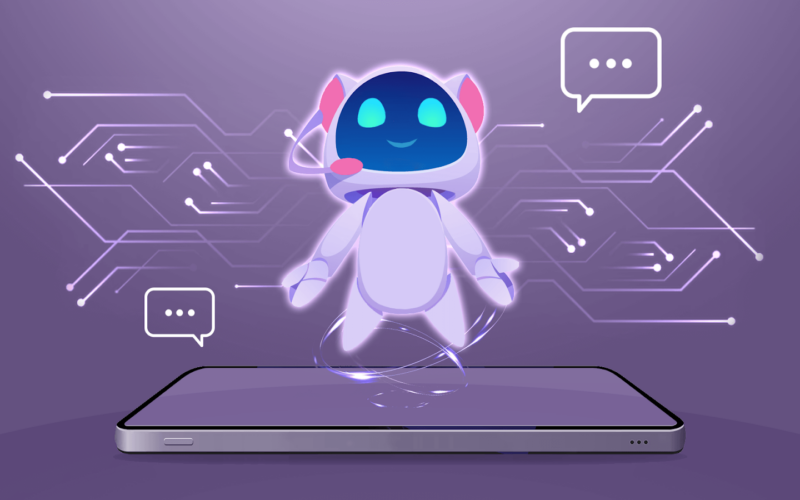Building a web portal begins with understanding its users and the challenges it needs to address. In a world where 74% of global respondents already use self-service online portals, businesses need to design experiences that are intuitive, secure, and reliable.
A well-structured portal centralizes information, enabling users to act faster with confidence. Every element, from content organization to system integration, contributes to how effectively users can engage and complete tasks.
This guide outlines practical considerations and structured steps to help teams plan, design, and build web portals that truly serve their purpose.
Key Takeaways
- Clearly define the portal’s purpose, target users, and the key features required to meet business needs.
- Plan the portal’s structure, content organization, and user journeys to make navigation intuitive and efficient.
- Design user-friendly interfaces and develop core functionalities with security, performance, and scalability in mind.
- Integrate necessary external tools and systems, conduct thorough testing, and refine the portal based on user feedback.
- Deploy the portal with monitoring in place, regularly update features, and scale the system as usage grows.
What Is a Web Portal?
A web portal is a secure online access point where information and tools are organized for easy use. It collects data from different systems and presents it in a way that users can navigate without confusion.
Portals provide personalized access, so each user sees information relevant to their role. This central environment helps employees, partners, or customers interact with content, complete tasks, and collaborate more effectively while keeping sensitive information protected.
Recommended: E-commerce Website Development Process: 9 Simple Steps.
How to Determine the Right Web Portal for Your Business
Many industries can gain significant benefits from a web portal, including healthcare, education, finance, retail, and manufacturing. Portals help streamline access to information, simplify interactions, and improve engagement with employees, customers, and partners. Determining the right type of portal is essential to address specific needs and objectives.
Common Types of Web Portals:
- E-commerce Portals: Provide a platform for online sales, product catalogs, and order management, allowing businesses to reach customers directly and manage transactions efficiently.
- Educational Portals: Enable access to learning materials, virtual classrooms, and student management systems, supporting both teachers and learners.
- Self-Service Portals: Allow users to complete tasks such as account management, service requests, or information retrieval independently, improving satisfaction and reducing support load.
Once you’ve identified the type of portal that fits your business needs, the next step is to follow a structured process to plan, design, and build it effectively.
Also Check: Why Australian Businesses Are Investing in Custom Web App Development in 2025.
Key Steps in Developing a Web Portal
The following steps guide teams through planning, design, development, integration, and testing to create a functional and user-friendly portal.
Step 1: Define Objectives and Gather Requirements
Start by identifying the portal’s purpose and target users, whether employees, customers, or partners. Engage stakeholders across departments to understand the problems the portal should solve and the features it must include. Important considerations include:
- Essential Features: Determine which functionalities the portal must offer, such as dashboards, reporting, and workflow tools.
- Data and Integration Needs: Identify all data sources and systems that the portal should connect to, ensuring smooth information flow.
- User Roles and Security: Define access levels and security requirements to protect sensitive information.
Step 2: Plan Information Architecture and User Journeys
Organize the content, tools, and services in a way that users can easily navigate. Mapping user journeys helps anticipate how different personas will interact with the portal. Key points to focus on include:
- Prioritizing Tasks and Information: Make the most important features and content easily accessible.
- Simplifying Navigation: Design pathways that allow users to complete tasks efficiently without confusion.
- Avoiding Clutter: Keep interfaces clean to reduce cognitive load and improve user satisfaction.
Step 3: Design the Interface and Experience
Create wireframes and prototypes that prioritize usability and clarity. Early user feedback can help refine the interface before development. Focus on:
- Clear Navigation and Labels: Ensure that menus, buttons, and links are easy to understand.
- Consistent Visual Design: Maintain uniform colors, fonts, and layouts across all screens.
- Accessibility and Responsiveness: Ensure the portal works well on all devices and accommodates users with different needs.
Step 4: Develop Core Features and Back-End Systems
Build the portal’s essential functionalities, including authentication, data management, and dashboards. A structured development approach allows future enhancements. Focus areas include:
- User Authentication and Role Management: Implement secure login systems and define user permissions.
- Data Handling and Storage: Ensure accurate data entry, validation, and safe storage.
- Core Functionalities: Develop dashboards, reporting tools, and task management modules.
Step 5: Integrate External Tools and Services
Connect the portal to the necessary external systems to enhance its capabilities. Integration should improve usability without adding complexity:
- System Integration: Link with CRM, ERP, analytics platforms, or payment gateways for smooth operations.
- Real-Time Updates: Ensure data is synchronized across all connected systems.
- Security and Privacy: Maintain compliance and protect sensitive user information.
Step 6: Test, Refine, and Launch
Conduct thorough testing to identify bugs and areas for improvement. Incorporate user feedback before rolling out the portal:
- Functionality and Usability Testing: Check that all features work as intended and are easy to use.
- Performance Monitoring: Measure speed, reliability, and response under load.
- Continuous Improvement: Launch gradually, track usage, and plan regular updates to keep the portal effective.
Building a web portal can be complex, but Codewave makes it efficient, reliable, and tailored to your business needs. With experience across 15+ industries and 400+ successful projects, we combine custom development, UX-focused design, and scalable architecture to deliver portals that work seamlessly for your users. Connect with us today to get started!
Technological Considerations for Building a Web Portal
Selecting the right technology is crucial for building a web portal that performs reliably and scales with future requirements. The choices made around development approaches, tools, and frameworks directly impact speed, security, and maintainability.
Key Points to Consider:
- Choosing the Right Tech Stack: Select programming languages, frameworks, and databases that align with your portal’s functionality and long-term goals. Consider scalability, integration, and support when making decisions.
- Adopting Suitable Development Methodologies: Agile or iterative approaches allow teams to implement features in phases, respond to feedback, and adjust priorities without derailing the project.
- Using Rapid Development Tools: Low-code platforms, pre-built modules, and automation tools can speed up development, reduce errors, and make initial deployment faster.
- Ensuring Security and Compliance: Choose technologies that support secure data handling, encryption, and compliance with industry regulations relevant to your organization.
- Planning for Future Expansion: Select tools and architectures that allow adding features, integrations, or user capacity as the portal grows, minimizing the need for major overhauls later.
Next, let’s look at design customization, ensuring the portal reflects your brand and delivers an intuitive user experience.
Check our blog to know more about the Top 11 Trends in Application Development for 2025.
Design Customization When Building a Web Portal
Customizing the design of a web portal ensures it aligns with the organization’s brand and provides a smooth user experience. Thoughtful design helps users navigate easily while reinforcing brand identity. Here are a few points to consider:
- Brand Integration: Incorporate company logos, colors, and typography consistently across the portal to maintain a cohesive brand presence.
- Intuitive Layout: Arrange menus, dashboards, and key features in a way that guides users naturally through tasks and information.
- Visual Hierarchy: Highlight important content and actions so users can quickly identify and access critical features.
- Responsive Design: Ensure the portal works seamlessly across devices and screen sizes, maintaining usability and visual appeal.
Now, it’s essential to implement the design carefully, monitor its performance, and continuously refine features to keep the portal effective and reliable.
Read Also: 8 Ways to Implement Cost-Effective AI Solutions for Business.
Deployment and Maintenance of Web Portal
Deploying a web portal involves careful planning to ensure smooth adoption and reliable performance from day one. Initiating a soft launch with a limited group of users helps identify issues and gather early feedback before a full-scale rollout.
- Soft Launch: Release the portal to a select group of users to test features, identify bugs, and gather initial impressions.
- Performance Monitoring: Track system performance, load times, and error reports to ensure stability and reliability.
- User Feedback Integration: Collect input from users on usability and functionality, and implement improvements based on this feedback.
- Regular Updates and Maintenance: Schedule updates for security patches, new features, and content refreshes to keep the portal relevant and secure.
- Scalability Planning: Monitor user growth and system usage to ensure the portal can scale smoothly as demand increases.
From planning to deployment and maintenance, each phase of building a web portal demands expertise and precision. Codewave bridges this gap with end-to-end development support, helping businesses launch portals that perform and scale effortlessly.
How Codewave Simplifies the Process of Building a Web Portal
Codewave builds web portals and applications 3x faster and at 30% less cost, thanks to Code Accelerate, our library of pre-built features. With experience across 15+ industries and 400+ successful projects, we create portals that are not just functional but intuitive, secure, and scalable.
What Sets Us Apart:
- Custom Development: Tailored portals designed to meet your specific business requirements.
- UX-Focused Design: Delightful interfaces that make navigation and task completion effortless.
- Rapid, Secure Launches: Faster deployment without compromising quality or security.
- Data-Driven Insights: Integrated analytics to help you track usage and improve decision-making.
- Scalable Architecture: Portals built to grow with your business, handling increased users and data seamlessly.
Let’s talk and bring your web portal vision to life, efficiently, reliably, and with an experience your users will love.
Conclusion
Building a web portal involves careful planning, thoughtful design, and robust technology to create a secure, centralized platform for users to access information and perform tasks efficiently. From defining objectives to deploying and maintaining the portal, each step contributes to a seamless and productive user experience.
For businesses seeking guidance, Codewave offers expertise in developing portals that combine speed, scalability, and usability. With our proven frameworks, custom designs, and industry experience across 15+ sectors, we help bring complex portal projects to life.
Book a call with us today to launch a web portal that meets your business needs and delights your users.
Frequently Asked Questions
Q. What is a web portal, and why does my business need one?
A: A web portal is a secure, centralized platform that organizes information, tools, and workflows for users. It helps improve efficiency, simplify access to data, and deliver personalized experiences for employees, customers, or partners.
Q. How long does it take to build a web portal?
A: The timeline depends on complexity, features, integrations, and design requirements. With structured planning and modern frameworks, a functional portal can typically be developed within a few weeks to a few months.
Q. What are the key features to include in a web portal?
A: Essential features often include user authentication, dashboards, role-based access, integration with existing systems, content management, and analytics for tracking usage and performance.
Q. How can I ensure the portal is secure and scalable?
A: Security can be maintained through role-based access, encrypted data storage, and compliance with industry regulations. Scalability is achieved using modular architecture and cloud-ready infrastructure that grows with your user base.
Q. Can Codewave assist with building and maintaining my web portal?
A: Yes. Codewave provides end-to-end web portal services, including planning, design, development, integration, deployment, and ongoing maintenance to ensure your portal remains efficient, secure, and user-friendly.
Codewave is a UX first design thinking & digital transformation services company, designing & engineering innovative mobile apps, cloud, & edge solutions.







